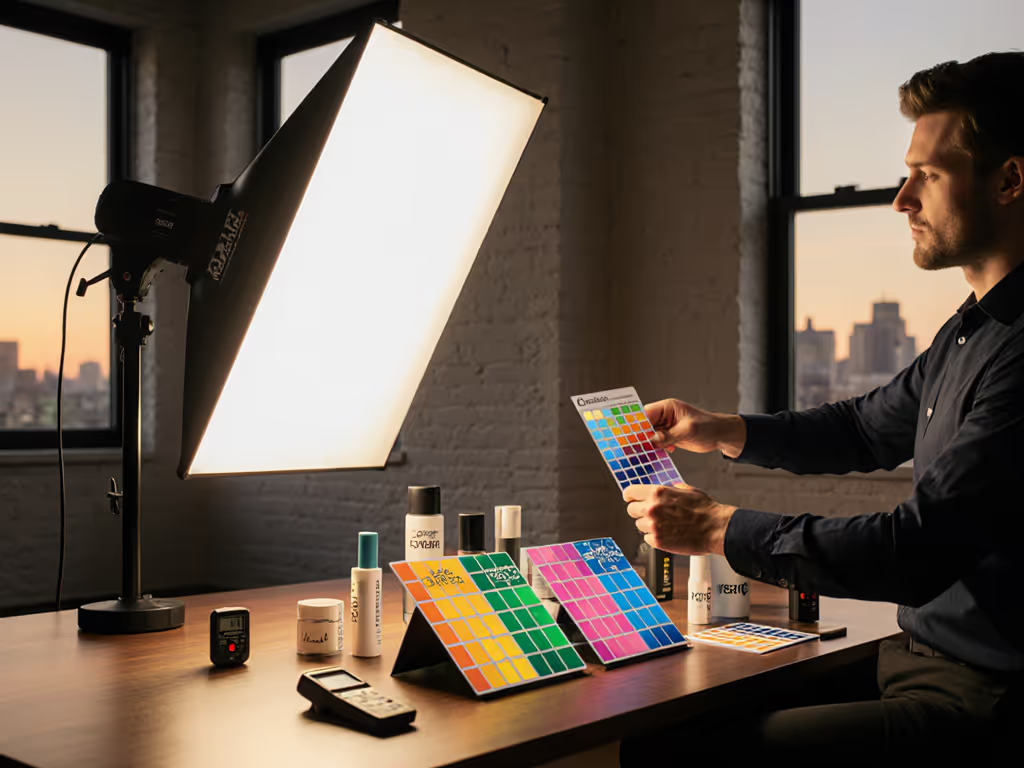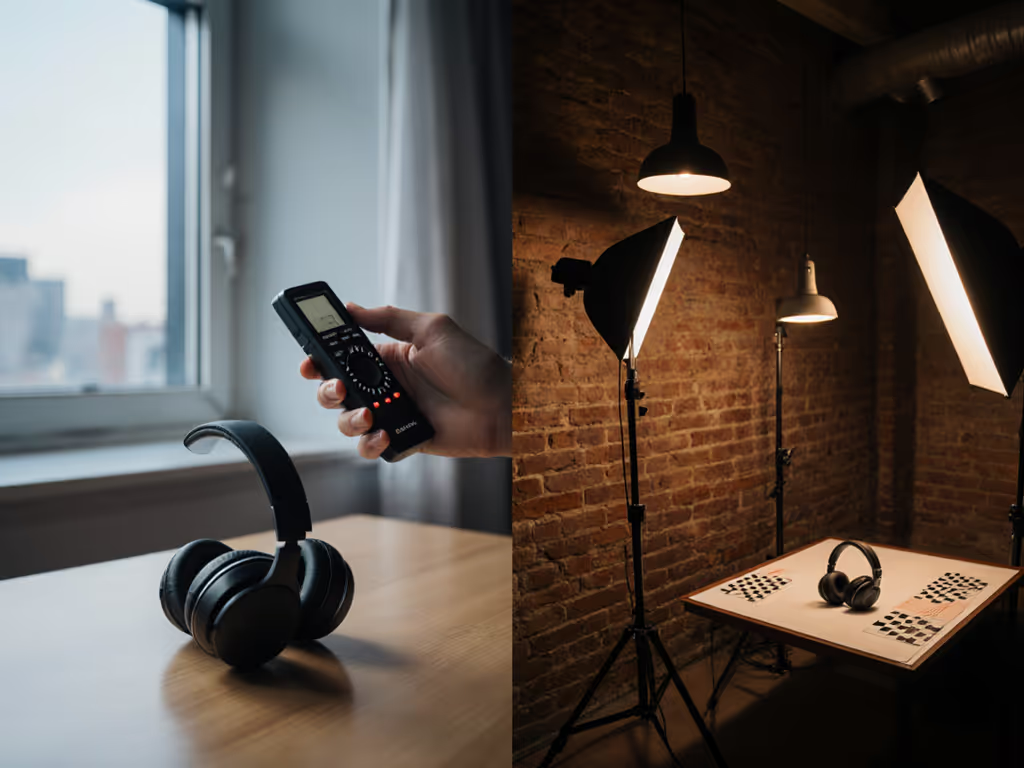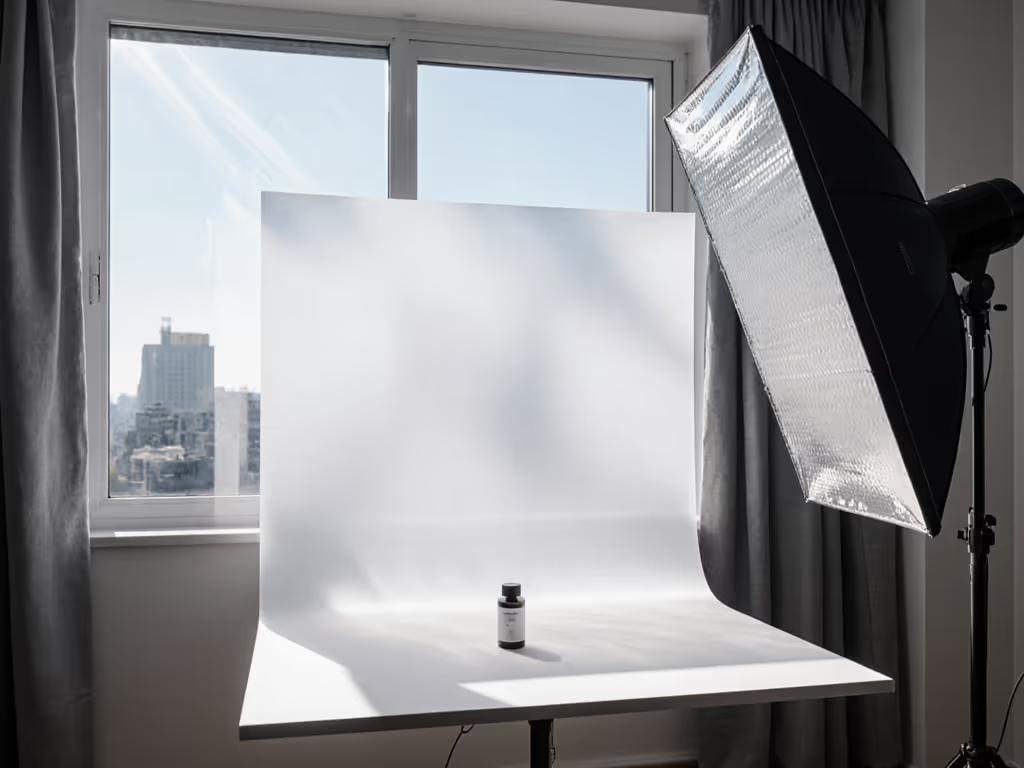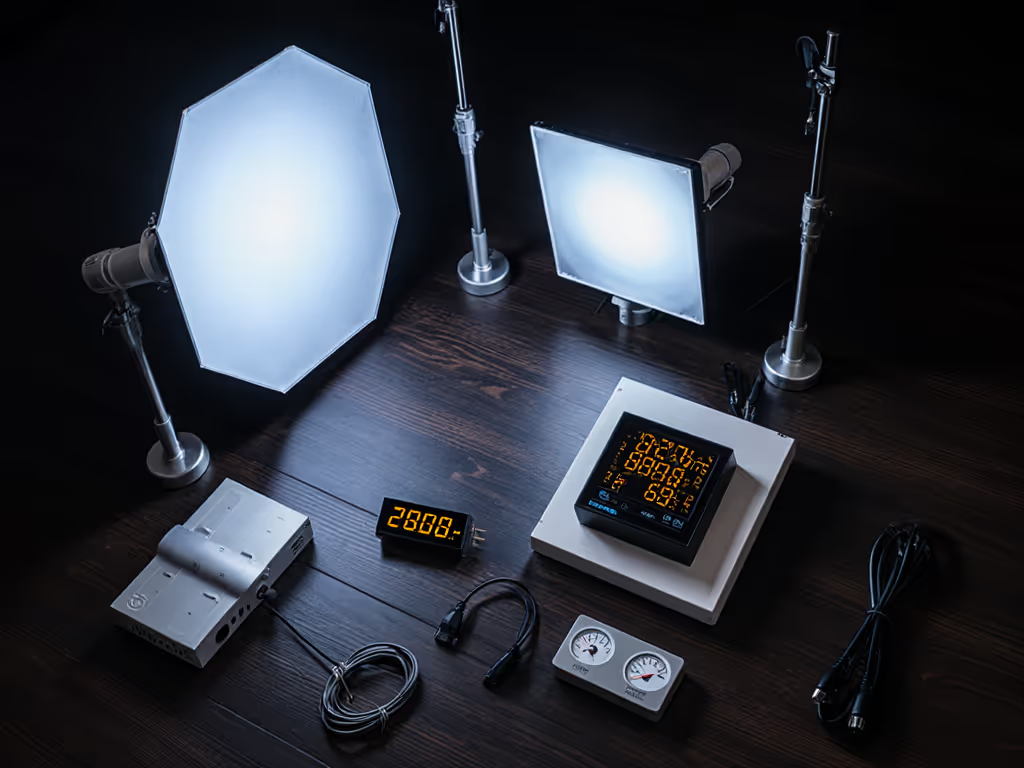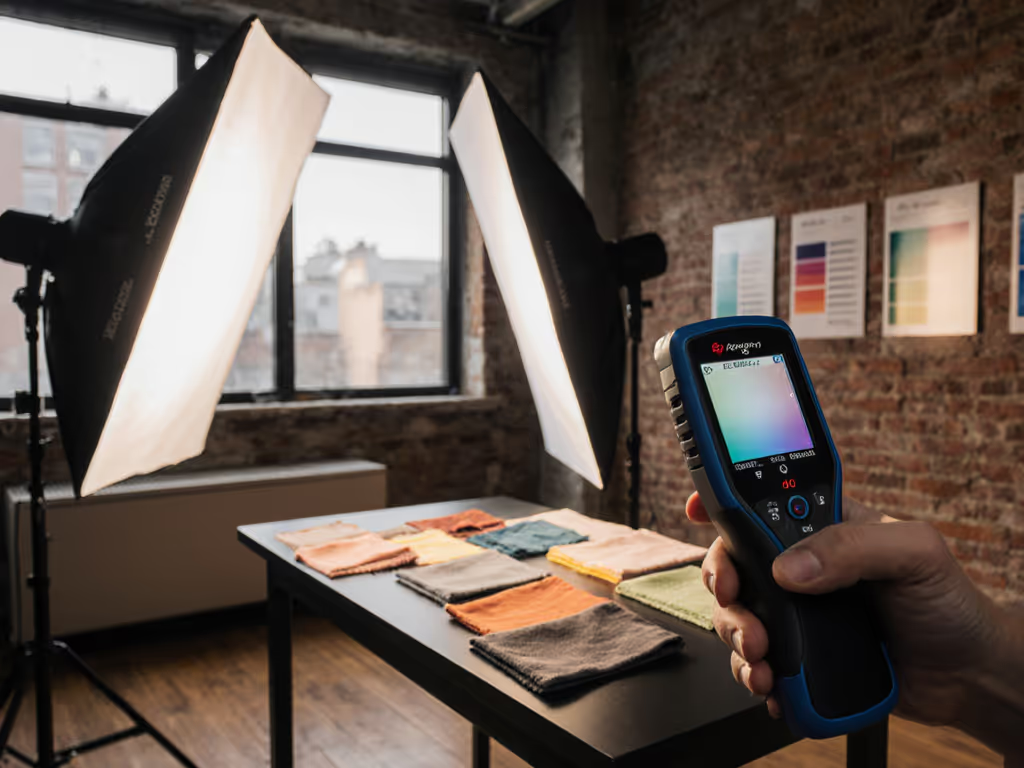When your client needs product photography lighting that matches Instagram and e-commerce shots under six different desks before lunch, improvisation isn't an option. Artificial vs natural lighting decisions become make-or-break moments for color-accurate deliverables. As someone who's rescued countless hybrid shoots with a printed Kelvin target and gray card, I'll show you how to build repeatable workflows, not heroic last-minute fixes. Whether battling window light contamination or LED flicker in cramped hotel rooms, consistency under pressure separates reliable pros from stressed strugglers. Let's translate physics into practical steps you can execute solo.
Why Natural Light Fails You Mid-Shoot (And How to Fix It)
Natural light isn't "free" when client trust is on the line. That northwest-facing window giving perfect catchlights at 9 AM will shift magenta by 11 AM as interior tungsten kicks in. Color accuracy analysis confirms what your retoucher complains about: mixed spectra cause 18% saturation shifts in product reds (per 2024 PMA report).
Checklists calm chaos, especially when weather changes or AC units cycle on.
The 3-Minute Natural Light Workflow for Controlled Results
When to use this: Small textured products (ceramics, textiles), organic food styling, or when battery power is limited. Never rely on "just window light," always neutralize ambient.
- Block competing light: At minute 0, shut curtains on non-working windows. Cover overhead fluorescents with 1/4 CTB gels (tape edges for safety). Your gaffer must verify no green spikes on waveform.
- Diffuse and direct: By minute 2, place a 36x48" diffusion panel 18" from window. Angle it to reflect light onto a silver reflector at 30° from product. Op checks: Meter shows 5600K +/- 100 on gray card.
- Lock exposure: At minute 3, shoot test frame. Confirm histogram isn't clipped. If shadows muddy, talent subtly repositions reflector, no reshoots. Stop when window intensity drops >1/3 stop.
Why this works: You've converted unpredictable light into a repeatable process. I used this for a chocolate brand's 12-city shoot, same Kelvin targets, same shadow depth. No post-correction needed.
Critical Pitfalls to Avoid
- Never skip metering: Phone apps lie. Use a calibrated incident meter (e.g., Sekonic L-478DR) at product height.
- Beware "cloudy" days: Overcast = 6500K BUT intensity drops 2-3 stops. Compensate by moving product closer to window, not raising ISO.
- No gel-free tungsten: Unbalanced interior lights = green spikes. Always flag or gel ambient sources below 3200K.
The Artificial Light Workflow: Precision Without Power Panic
Setup time evaluation reveals the truth: A documented artificial setup beats frantic natural-light chasing. Yes, LEDs need outlets, but smart power management prevents breaker trips during video recording. Cost effectiveness study data shows compact LEDs pay back in 3 shoots via reduced reshoots (2023 B&H survey).
The 7-Minute Hybrid Lighting Workflow for Tight Spaces
When to use this: Glossy products (tech, jewelry), color-critical branding, or when ambient light is contaminating. This is your safety net when windows face brick walls.
- Base layer setup: At minute 0, position a 60W LED panel (e.g., Aputure Amaran COB) 24" from 24x24" softbox. Gaffer confirms 5600K via spectrometer. Op meters 1/125th @ f/8, ISO 400.
- Kill reflections: By minute 3, place a black V-flat 8" from product at 45° opposite light. Use polarizing filter on lens, talent rotates until hotspots vanish. Re-meter (exposure drops 1.5 stops). For deeper techniques on reflective products, see our guide to controlling specular highlights.
- Match ambient: At minute 5, add 30W fill light bounced off foam core at 45°. Op matches window light CCT within 200K. Gaffer verifies total load <12A on 15A circuit.
- Final calibration: By minute 7, shoot gray card with both lights. Op sets custom WB in camera. Lock shutter angle to 172.8° for flicker-free video.
Critical safeguards:
- Power math: (Total wattage / voltage) x 1.2 must be < circuit amps. Example: 100W LED on 120V = 0.83A x 1.2 = 0.99A, safe for shared circuit.
- No PWM flicker: Check light specs for >3000Hz frequency. Cheap LEDs ruin 24/25fps video.
- Ceiling height fix: Halve softbox size when under 9ft ceilings. A 24x24" box creates harsh shadows at 3ft height, use 15x15" instead.
Hybrid Lighting: The Repeatable Workflow for Real Rooms
Natural and artificial light aren't opposites, they're tools in your reliability kit. Consistency across 200+ shoots proves: Documented hybrid setups solve the #1 pain point, "inability to recreate a look".
The 10-Minute Workflow for Mixed-Spectra Environments
When to use this: Retail spaces with mixed CCT practicals, or when showcasing products "in context" (e.g., skincare on bathroom counter).
- Neutralize first: At minute 0, meter all ambient sources. Flag or gel anything below 4300K or above 6500K. Gaffer logs CCT/targets.
- Layer artificial light: By minute 4, match key light CCT to dominant ambient (e.g., 4500K for office fluorescents). Op sets light 2 stops brighter than ambient to overpower contamination.
- Lock color science: At minute 7, shoot X-Rite ColorChecker. Op creates custom profile in Capture One. Export to DaVinci Resolve for video sync.
- Test cross-format: By minute 9, shoot 10-second video + still at same exposure. Op verifies skin tones match Rec.709 vs S-Log3.
Why this beats "faking it": I once had a client demand identical color on iPhone and Sony FX3 shots across 6 hotel rooms. By documenting CCT, distance, and exposure targets (not just "mood"), we nailed it. No client rejected colors. No panic. Just checklists.
Your Actionable Next Step: Build a Lighting Log
Stop gambling on "good light." Today, create a lighting log for your next shoot:
- Note ambient CCT with phone app (e.g. Luxi For Light Meter)
- Measure light-to-product distance with tape measure
- Record meter readings at product position
- Snap gray card with camera settings visible
This takes 90 seconds. But when you move locations tomorrow, you'll have a baseline, not guesswork. That skincare shoot I mentioned? The team printed logs for every desk setup. When afternoon sun hit window 3, they knew to add 1/4 CTO in 2 minutes, not 20.
Checklists calm chaos; they're the difference between "I hope this matches" and "I know it matches." Your deliverables deserve that certainty. Now go document your next setup, and I'll be the one who never improvises.
